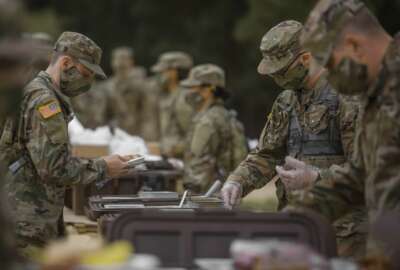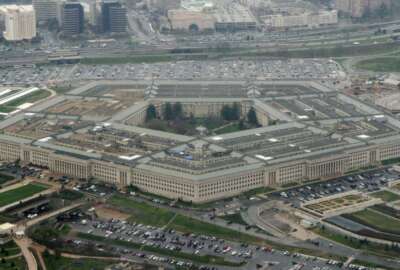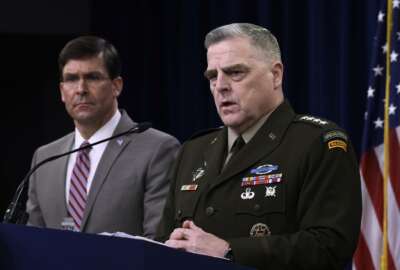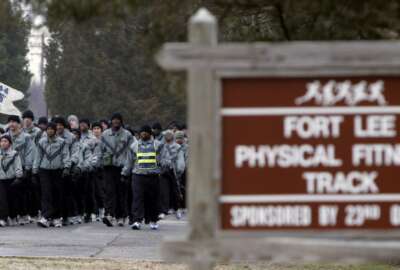
Many DoD bases expected to restrict travel ahead of holidays as COVID cases rise
The military is seeing nearly 1,000 service members diagnosed with COVID per day.
Just last week the Pentagon increased its health protections as coronavirus cases in the area continue to rise. Now with service member cases hitting record levels, expect bases to start restricting travel.
The spike in cases comes just as the holiday season is beginning, and may leave some service members unable to travel far from their assigned installations.
To date, nearly 75,000 service members have been diagnosed with COVID-19. More than 30,000 of those are active cases. The military has seen a little less than 6,000 cases over the last five days.
The Defense Department last updated its list of bases with travel restrictions on Nov. 16. At the time of publication, 61% of military installations lifted their restrictions. However, Pentagon spokesman Jonathan Hoffman said he expects that to change.
“I would suspect you’re going to see an increase of facilities going to Health Protection Condition Charlie,” Hoffman said Tuesday at the Pentagon. “The Navy across the board has increased their level to Charlie. The decision is based on local communities and the operational needs of the services. But I think we will see those closures going up.”
HPCON Charlie cancels in-person events, prepares service members for the potential of limited supplies and restricts base access and travel.
Hoffman said he does not expect DoD as a whole to come out with any new guidance for the military as a whole.
“We feel comfortable with the level of guidance we put in place in the past,” Hoffman said. “We have weathered this relatively well based on the guidance that was provided back in February. The number one priority of the department is to protect our people and ensure we can do our mission.”
Under the current set of policies, DoD says movement between bases is phased, data-driven and based on each location’s condition.
Before an individual base can move from “red” to “green,” it will need to:
- Show a 14-day declining trend in symptoms and cases and be in a state that does not currently not have a stay at home order.
- Have already moved to Health Protection Condition “Bravo” or better — meaning the base is not experiencing sustained community transmission and has enough health care capacity to handle a spike in cases.
- Get approval from a military department secretary or combatant commander to lift travel restrictions, once the other conditions are met.
In some cases, “green” and “red” bases are patchworked within a particular state, because of local conditions.
Dr. Lee E. Payne, assistant director for combat support at the Defense Health Agency, said DoD has increased its testing capabilities.
For the past five weeks, the department has conducted 70,000 tests per week on active duty, reserve and guard service members.
Lab capabilities also increased. DoD moved from processing 200,000 tests a week to processing 300,000 tests a week at 158 labs.
Since the beginning of the pandemic, the department conducted 1.7 million tests.
Currently, the vaccines that have shown positive results are waiting for authorization from the Food and Drug Administration.
Army Gen. Gustave Perna, who leads Operation Warp Speed – the project in charge of helping to develop and disseminate the vaccine – said once the vaccine is approved it will be available for shipment anywhere in the United States.
For each location, however, there’s a minimum delivery requirement of the vaccine, which is 975 doses by Pfizer, and 100 doses by Moderna, Perna said.
Service members likely won’t be high on the list for getting the vaccine, Hoffman said. That’s because they tend to be low-risk in that they are young, do not have pre-existing conditions and are in good health.
The current priority for the vaccine starts with healthcare workers, then nonessential workers. From there, vulnerable populations and older people in long-term care will get vaccines.
Copyright © 2024 Federal News Network. All rights reserved. This website is not intended for users located within the European Economic Area.
Scott Maucione is a defense reporter for Federal News Network and reports on human capital, workforce and the Defense Department at-large.
Follow @smaucioneWFED







